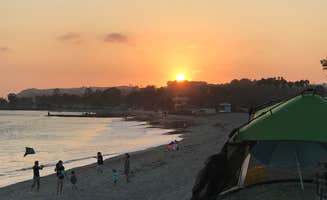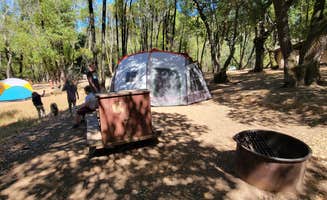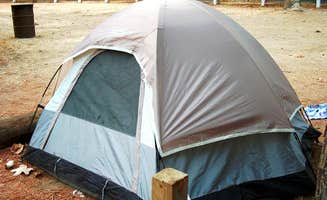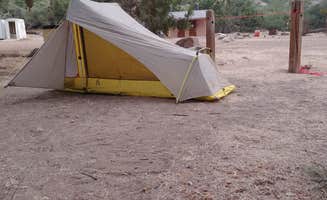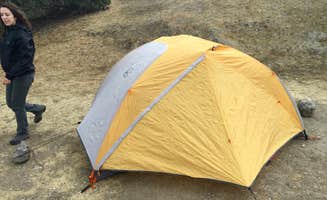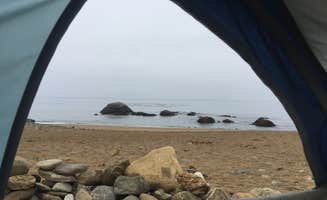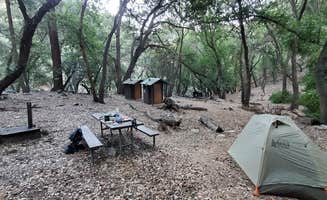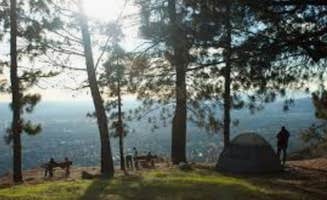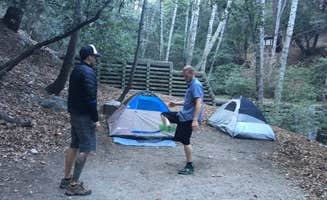Tent camping near Laguna Beach, California extends beyond the popular state beach options to include several remote island experiences on Catalina Island. The sites at Two Harbors Campground provide beach access with minimal facility development, creating a more rustic coastal experience compared to mainland options. Morning coastal fog typically burns off by mid-day during summer months, though evening temperatures drop significantly with consistent ocean breezes.
What to do
Kayaking at Little Harbor: The protected cove at Little Harbor Campground provides ideal conditions for launching kayaks and exploring the coastline. "Great for spearfishing or snorkeling. Rock cliffs wrap both north and south of the beach for miles and there are kayaks for rent on the beach, but need to pre-order," notes Jon C.
Beach camping and biking: Access bike trails directly from your campsite for coastal exploration. "I love the sound of the waves and the fog horn. There are great bike trails to ride on. There are no hook ups but the price is right for beach front camping," mentions Karissa J. at Doheny State Beach.
Island wildlife viewing: Camp areas frequently receive wildlife visits, providing unique nature observation opportunities. "In one day we saw deer, quail, woodpeckers and the famous Catalina fox," reports Jonathan K. who stayed at Hermit Gulch Campground on Catalina Island.
Hiking with elevation: Some tent campsites provide direct access to challenging trail systems with significant elevation changes. "We hiked about 8 miles from Eaton Canyon Park via Jones Peak & the Mount Whitney Connector Trail to Upper Winter Creek," describes Anthony K. about accessing backcountry sites.
What campers like
Remote beach access: Secluded beaches with minimal crowds appeal to campers seeking quiet coastal experiences. "One of the most amazing campgrounds I've ever stayed at. You're on a sandy beach with waves crashing on the shore. There's only a handful of sites, so try to book this early," writes Luis N. about Parsons Landing Campground.
Primitive wilderness feel: Some tent sites offer a more immersive natural experience despite proximity to urban areas. "Beyond the falls, the trail takes on a greater feeling of wilderness immersion. This section of Gabrielino Trail gets less foot traffic, making it a great retreat for those times when you need to feel far from LA," explains David F. regarding Spruce Grove Trail Camp.
Island camping logistics: Catalina Island camping requires additional transportation planning but rewards with unique experiences. "We took the ferry from San Clemente to Avalon (45 mins to 1 hour). Then a bus from Avalon to the campsite (1 to 1.5 hours depending the stop at the airport)," details Jon C. about reaching Little Harbor.
Walk-in site advantages: Some campers appreciate the separation from vehicles that walk-in sites provide. "This is more of your traditional campground where you must carry all your food and gear to the campsite. It is a short hike from the parking lot to the camping area and the camp hosts can provide containers to carry your items," explains Tim J. about China Camp State Park.
What you should know
Site selection strategy: Choose sites strategically based on your priorities for noise, shade, and access. "I recommend a site closer to the water. Make sure you have all your supplies with you," advises Ken about Little Harbor Campground.
Wildlife awareness: Prepare for unexpected wildlife encounters at island and mainland sites. "You won't be able to see the coastline when at this campground but definitely will on your travels along the trail to get to the campground. The fox are no joke and aren't afraid to get close. Keep all food and scented items locked up," warns Leasa W. about Black Jack Campground.
Weather variations: Coastal tent sites experience significant daily temperature fluctuations. "In the rain we embarked to Doheny SB and we stayed on spot 6. As soon as we arrived to our spot it was flooded see pictures. We where fortunate that it did not rain all week," shares Manuel P.
Reservation timelines: Peak season requires advance planning, especially for desirable sites. "You have to reserve on Reserve America. The sites are pretty expensive and charge by the person. $27-$29 (Winter-Summer pricing) for each person with a $10 reservation fee," explains Hayley K. about Two Harbors.
Tips for camping with families
Site proximity considerations: When camping with children, evaluate walking distances to facilities. "I am camping with my husband and 3 kids and our puppy. The hosts are friendly, cheap firewood, china beach village is just down the road and perfect to explore and swim," reports Veronica H. about China Camp State Park.
Water safety planning: Prepare for variable swimming conditions at beach sites. "BEWARE--WEAR WATER SHOES and be careful if you swim here. The water is clean but there are tons of sharp rocks and oyster shells bits & pieces," cautions Sara W. about beach swimming areas.
Supply transportation: Evaluate your gear hauling capability when selecting sites. "A little pricey per night ($70) but sometimes you just gotta splurge. You do have to walk to your site which involves a few hills but I took a few breaks along the way and it was fine. You can pay to get your luggage delivered to your site," explains Amber about Two Harbors Campground.
Educational opportunities: Family camping provides unique learning experiences about island ecosystems. "My grandparents where coming through town to see my husband and me and everyone was amazing and helped them out. The campgrounds where clean and you could smell the bonfires each night," shares Larenn R. about their family gathering.
Tips from RVers
Limited hookup considerations: Most coastal tent sites have minimal to no RV amenities. "I did note which campsites to avoid if theres a chance of rain. Dump site: When we first arrive it was out of order with a 'clogged signed'. It was fixed the following day. There is a $10 fee, they have a convenient credit card machine," advises Manuel P. about Doheny State Beach Campground.
Water access points: Identify specific locations for RV tank filling versus potable drinking water. "Theres a hose there to use for clean up or flushing tank. Dump site is narrow so watch your sides. Water Fill for RV: Something maybe this app should distinguish is 'Drinking Water'. What sort of Water access? for RV tank filling or for simple hand held vessels," continues Manuel P.
Site spacing and privacy: Coastal RV sites often provide minimal separation between neighbors. "The location is obviously great but the sites are on top of each other. No privacy and are definitely built for RVs and Trailers," explains Morgan F. about site configuration.


